Zesty Asian Cabbage Stir Fry Recipe That Sizzles With Flavor
Crisp vegetables dance in a sizzling wok, creating an irresistible Asian cabbage stir fry that promises bold flavors and quick satisfaction.
Vibrant green and white cabbage slices mingle with aromatic seasonings, delivering a punch of umami in every bite.
Weeknight dinners become extraordinary with this simple yet stunning dish that comes together in minutes.
The combination of crunchy cabbage and savory sauce offers a delightful balance of textures and tastes.
Minimal ingredients transform into a restaurant-worthy meal that will have everyone asking for seconds.
This stir fry brings the excitement of Asian cuisine right to your kitchen, making dinner both easy and delicious.
Grab your chopsticks and prepare for a culinary adventure that will become a new favorite.
Asian Cabbage Stir-Fry Highlights
Asian Cabbage Stir-Fry Ingredient Guide
Main Ingredients:Aromatics:Sauces and Seasonings:Cooking Oils:Steps for Asian Cabbage Stir-Fry Success
Step 1: Whip Up Fluffy Scrambled Eggs
Grab a skillet and warm olive oil over medium heat.
Crack the eggs and swirl them around, creating soft, pillowy scrambled eggs.
Once they’re perfectly set, scoop them onto a waiting plate.
Step 2: Wake Up the Aromatics
In the same skillet, drizzle another splash of olive oil.
Toss in chopped onions and minced garlic, letting them dance and release their fragrant magic for about a minute.
Step 3: Transform Vegetables
Pour in the remaining olive oil, then add:Cover the skillet and let the vegetables soften and become tender, about 3-4 minutes.
Step 4: Create Flavor Explosion
Splash in your saucy friends:Let everything simmer and mingle for 1-2 minutes.
Give it a quick taste and sprinkle salt as needed.
Step 5: Bring It All Together
Return those fluffy scrambled eggs to the skillet.
Gently fold and mix everything until the eggs are beautifully coated with the savory sauce.
Your Asian Cabbage Stir-Fry is ready to rock the dinner table!
Stir-Fry Tips for Crisp Results
Asian Cabbage Stir-Fry Variations
Serving Asian Cabbage Stir-Fry Hot
Storage Guide for Asian Stir-Fry Leftovers
FAQs
The combination of soy sauces, oyster sauce, and sugar creates a balanced umami-sweet flavor profile that enhances the natural taste of vegetables and eggs.
Yes, this stir-fry provides a delicious way to eat multiple vegetables like cabbage and carrots, packed with nutrients and fiber in a single dish.
Absolutely! This stir-fry takes about 15 minutes total, making it a perfect quick weeknight meal for busy people who want a nutritious dinner.
No, this recipe is beginner-friendly. It uses simple techniques like sautéing and requires basic knife skills for chopping vegetables.
Print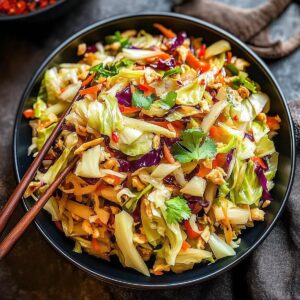
Asian Cabbage Stir Fry Recipe
- Total Time: 20 minutes
- Yield: 4 1x
Description
Asian cabbage stir fry brings a symphony of flavors dancing through your kitchen. Crisp vegetables and savory sauce create a quick, satisfying meal that connects you with authentic Asian culinary traditions.
Ingredients
Main Components:
- 12 ounces (340 grams) green cabbage, thinly sliced
- 3 medium eggs, beaten
- 1 medium carrot, julienned
Aromatics:
- 2 tablespoons diced onion
- 2 cloves garlic, minced
Sauce and Seasoning:
- 1 tablespoon light soy sauce
- 2 teaspoons dark soy sauce
- 2 teaspoons oyster sauce
- 2 teaspoons white sugar
- Salt to taste
Cooking Oil:
- 4 tablespoons olive oil, divided
Instructions
- Warm a skillet over medium heat and gently scramble eggs in olive oil until they’re fully cooked and set. Transfer eggs to a separate plate.
- In the same skillet, sauté onions and garlic for approximately 60 seconds, releasing their aromatic qualities and creating a fragrant base.
- Introduce cabbage and carrots to the skillet, drizzling with remaining olive oil. Cover and allow vegetables to soften for 3-4 minutes, stirring occasionally to ensure even cooking.
- Pour both soy sauces, oyster sauce, and sugar into the vegetable mixture. Stir thoroughly and continue cooking for an additional 1-2 minutes to meld flavors and enhance seasoning.
- Reintegrate the previously cooked eggs into the skillet, gently folding them into the vegetable mixture to distribute evenly and create a harmonious blend of textures and flavors.
- Perform a final taste check, adjusting salt levels if necessary, and ensure all ingredients are heated through before serving.
Notes
- Enhance egg texture by whisking them with a pinch of salt before scrambling, creating fluffier, more tender eggs.
- Slice vegetables uniformly to ensure even cooking and consistent texture throughout the stir-fry.
- Swap soy sauce with tamari or coconut aminos for gluten-free dietary needs, maintaining the rich umami flavor profile.
- Boost protein content by adding tofu, chicken, or shrimp during the vegetable cooking stage for a more substantial meal.
- Prep Time: 10 minutes
- Cook Time: 10 minutes
- Category: Lunch, Dinner, Snacks
- Method: Sautéing
- Cuisine: Asian
Nutrition
- Serving Size: 4
- Calories: 210
- Sugar: 2 g
- Sodium: 500 mg
- Fat: 14 g
- Saturated Fat: 2 g
- Unsaturated Fat: 10 g
- Trans Fat: 0 g
- Carbohydrates: 18 g
- Fiber: 3 g
- Protein: 7 g
- Cholesterol: 210 mg

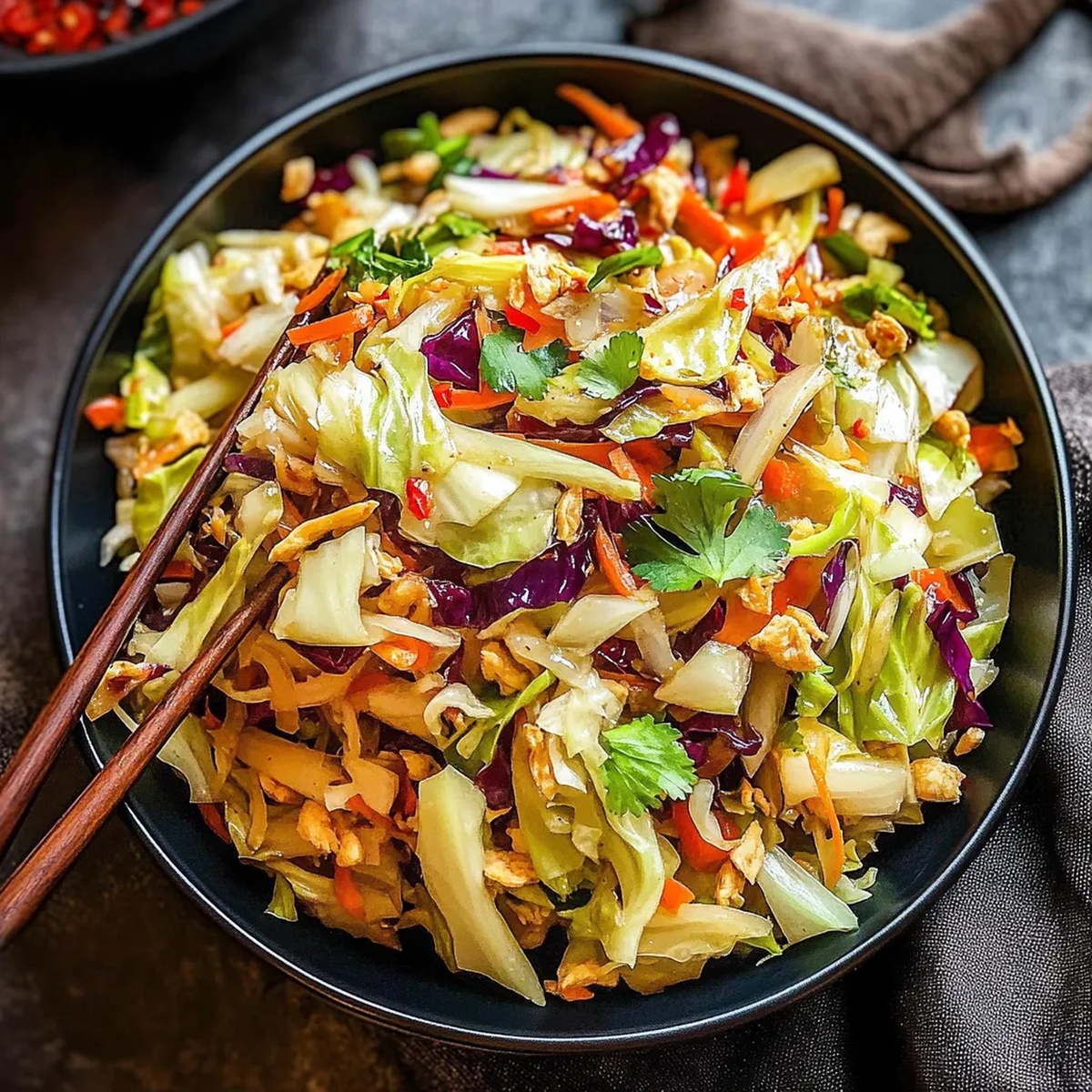
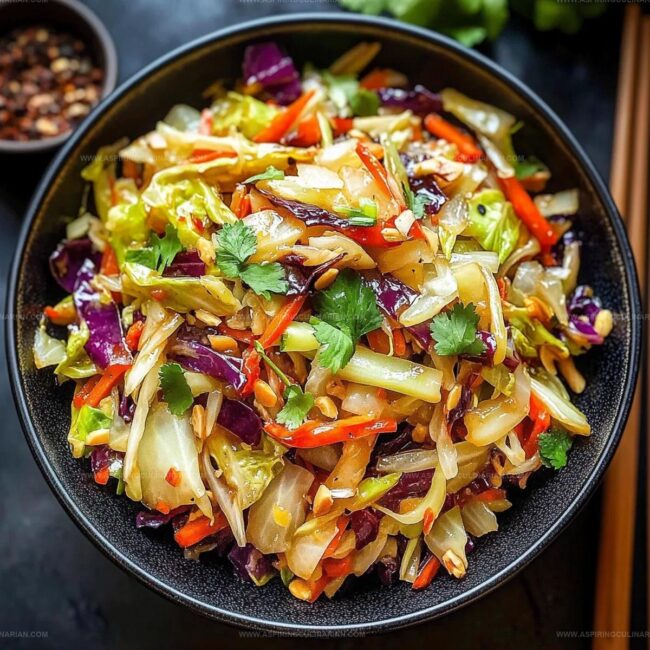
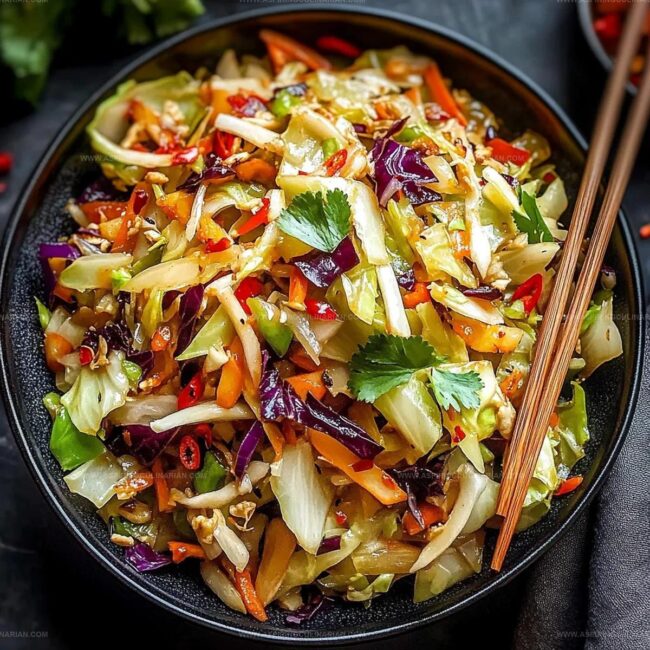
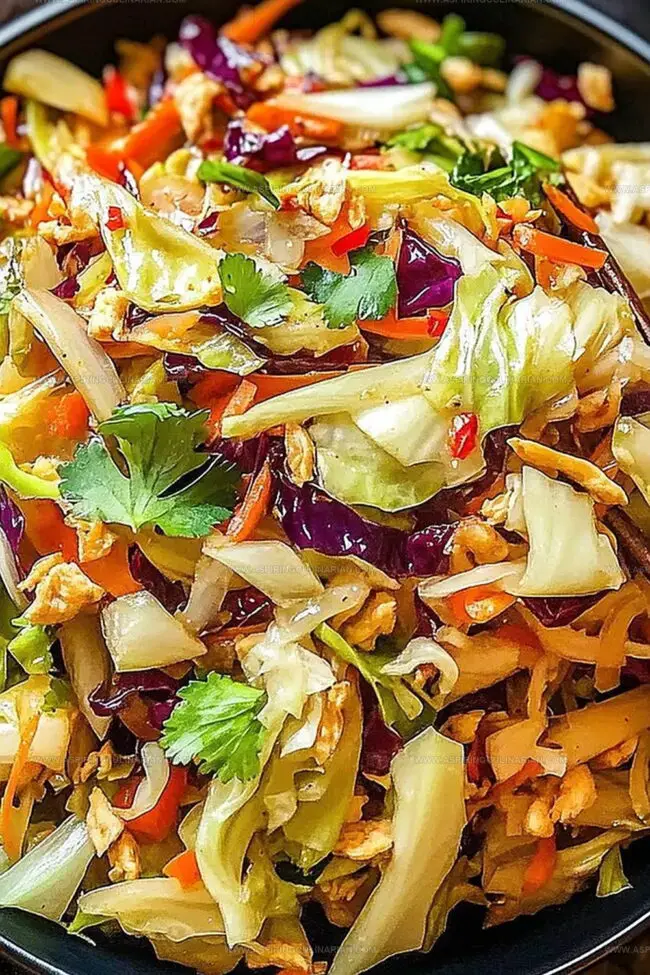
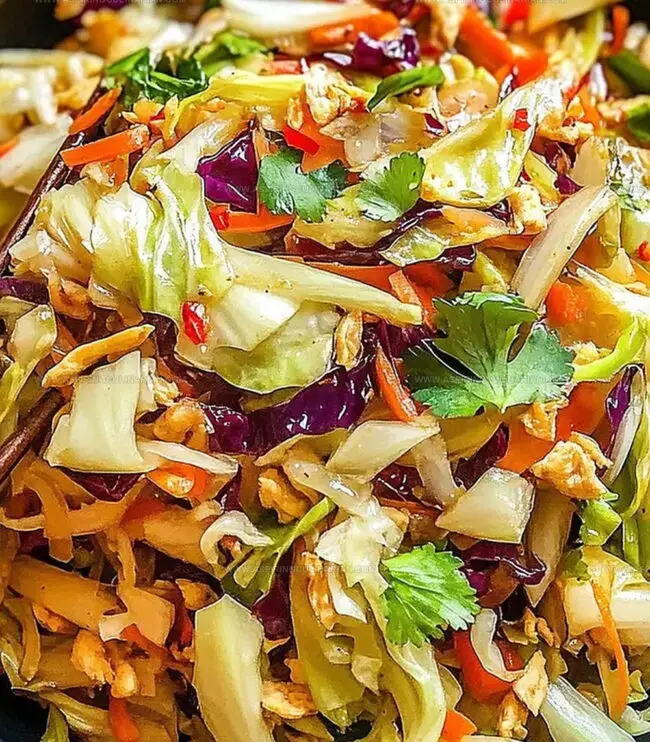
Lena Martinez
Contributing Writer & Culinary Educator
Expertise
Southwestern and Latin American cuisines, Vegetarian and plant-based recipe development, Culinary education and community outreach
Education
Santa Fe Community College, Santa Fe, NM
Certificate in Culinary Arts
Emphasized Southwestern cuisine and sustainable cooking practices
Lena grew up surrounded by the colors, spices, and traditions of the Southwest – flavors that sparked her love for bold, honest cooking. After earning her Culinary Arts certificate at Santa Fe Community College, she made it her mission to teach home cooks how to create flavorful, plant-powered meals without the fuss.
Her recipes are packed with vibrant ingredients, simple steps, and the kind of heart that turns a regular meal into something you’ll want to share. Outside the kitchen, Lena spends her time wandering farmers’ markets, trading family recipes, and helping young chefs find their voice through food.